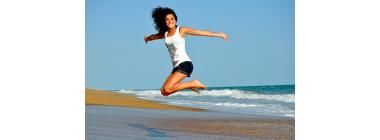.jpg)
Combatting fog
Combating fog can be a challenge, especially for drivers and pedestrians who rely on clear visibility for safety. Here are some ways to deal with fog effectively:
1. Fog Dispersal Methods
- Chemical Dispersal: Airports sometimes use chemicals like hygroscopic substances (e.g., salt) to absorb moisture and dissipate fog. However, this is usually on a small scale and isn’t practical for urban areas.
- Heat or Air Mixing: Heating the air or using large fans to mix warmer and cooler air can sometimes reduce fog density. This is typically used at airports but is not practical over large areas.
2. Technological Aids for Visibility
- Fog Lights and Headlights: Special fog lights and low-beam headlights help improve visibility by minimizing light reflection off the fog. Avoid high beams, which reflect off the fog and make visibility worse.
- Radar and Sensors: In transportation, radar and sensor technology can help vehicles navigate in low visibility, especially in autonomous or semi-autonomous cars.
- Infrared Cameras: Some vehicles are equipped with infrared cameras that can help drivers see through fog by detecting heat signatures from objects.
3. Weather Modifications
- Cloud Seeding: Although primarily used to induce rainfall, cloud seeding can sometimes reduce fog by altering the microphysical properties of the air. This method is costly and primarily used in specialized fields.
4. Personal Measures in Foggy Conditions
- Use Landmarks: In foggy conditions, stick to known paths and use landmarks to guide yourself.
- Slow Down and Increase Distance: Whether walking, biking, or driving, slow down and increase your distance from others to give yourself extra time to react.
5. Urban Planning and Design
- Wind Corridors: Urban design can include wind corridors to help dissipate fog in areas prone to low visibility.
- Fog Nets and Collectors: In some regions, fog collectors are used to capture fog droplets for water harvesting, and this can simultaneously reduce fog density.
Fog is a natural phenomenon that can be difficult to fully eliminate, but a combination of careful urban design, technology, and individual caution can help mitigate its impact.
Combating fog can be a challenge, especially for drivers and pedestrians who rely on clear visibility for safety. Here are some ways to deal with fog effectively:
1. Fog Dispersal Methods
- Chemical Dispersal: Airports sometimes use chemicals like hygroscopic substances (e.g., salt) to absorb moisture and dissipate fog. However, this is usually on a small scale and isn’t practical for urban areas.
- Heat or Air Mixing: Heating the air or using large fans to mix warmer and cooler air can sometimes reduce fog density. This is typically used at airports but is not practical over large areas.
2. Technological Aids for Visibility
- Fog Lights and Headlights: Special fog lights and low-beam headlights help improve visibility by minimizing light reflection off the fog. Avoid high beams, which reflect off the fog and make visibility worse.
- Radar and Sensors: In transportation, radar and sensor technology can help vehicles navigate in low visibility, especially in autonomous or semi-autonomous cars.
- Infrared Cameras: Some vehicles are equipped with infrared cameras that can help drivers see through fog by detecting heat signatures from objects.
3. Weather Modifications
- Cloud Seeding: Although primarily used to induce rainfall, cloud seeding can sometimes reduce fog by altering the microphysical properties of the air. This method is costly and primarily used in specialized fields.
4. Personal Measures in Foggy Conditions
- Use Landmarks: In foggy conditions, stick to known paths and use landmarks to guide yourself.
- Slow Down and Increase Distance: Whether walking, biking, or driving, slow down and increase your distance from others to give yourself extra time to react.
5. Urban Planning and Design
- Wind Corridors: Urban design can include wind corridors to help dissipate fog in areas prone to low visibility.
- Fog Nets and Collectors: In some regions, fog collectors are used to capture fog droplets for water harvesting, and this can simultaneously reduce fog density.
Fog is a natural phenomenon that can be difficult to fully eliminate, but a combination of careful urban design, technology, and individual caution can help mitigate its impact.
By Jamuna Rangachari








